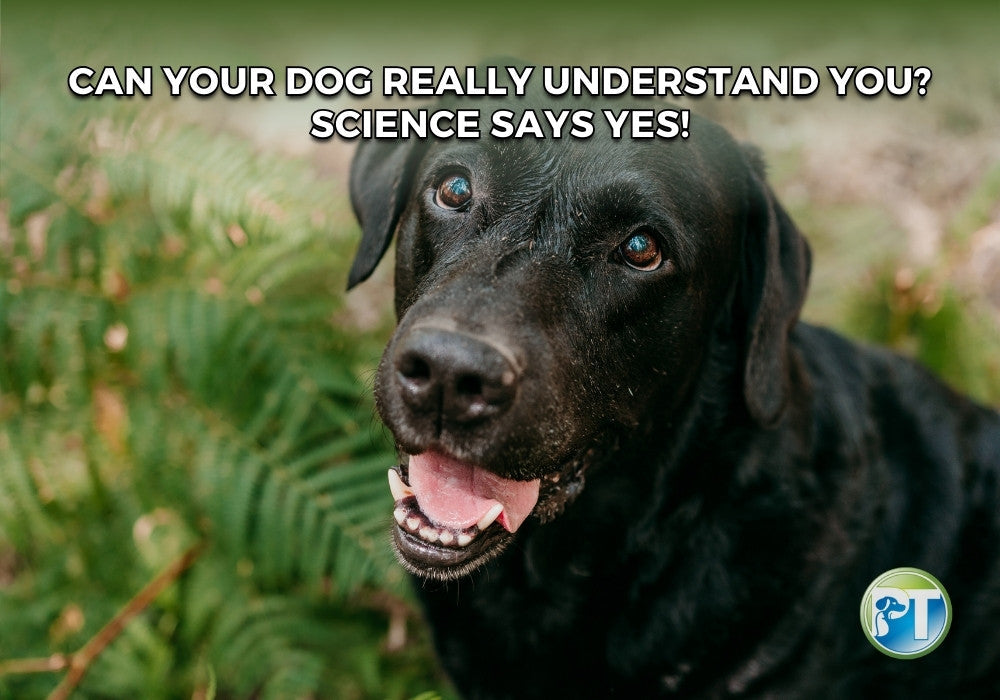Can Dogs Understand Human Words? Science Reveals the Truth

Have you ever wondered if your dog truly understands you? We talk to our furry companions constantly, using a barrage of words and phrases. But does our dog really know the difference between "treat" and "playtime”? Or are they simply masters at picking up on our tone and body language?
This mystery has puzzled dog lovers for ages. Thankfully, a recent study published in the journal Current Biology offers some exciting new insights. The research suggests that dogs can actually understand words associated with specific objects!
But how did scientists crack the code of canine comprehension? Let's delve deeper.
Breaking Down the Study
A recent study by neuroscientist Marianna Boros and her team in Hungary aimed to revolutionize our understanding of canine comprehension. Unlike previous research that relied solely on behavioral tests, Boros's team took a novel approach: utilizing electroencephalogram (EEG) recordings.
EEGs are powerful tools that measure brain activity by detecting the subtle electrical impulses generated by firing neurons. With this technology, the researchers were able to directly observe how a dog's brain reacts in real time to specific spoken words.
During the experiment, the dogs are comfortably outfitted with EEG electrodes strategically placed on their scalp. Then, the dogs were exposed to pre-recorded commands from their owners, using familiar words associated with specific objects, such as a ball. The owner would then appear, either holding the object being mentioned (the ball in this case) or a completely different object.

Decoding Canine Comprehension
The key element in the experiment is analyzing the dogs' brain wave patterns. When presented with the matching object (like their beloved ball after hearing "ball"), a specific pattern emerged. Conversely, a different pattern arose when the object didn't match the spoken word. This suggests that dogs aren't just recognizing sounds. They're actively making the connection between specific words and the objects they represent.
The study went even further. It found that dogs with varying levels of vocabulary displayed similar neural responses. This exciting discovery implies that understanding words might be more widespread among our canine companions than we ever imagined. It challenges the old belief that only a handful of highly trained dogs possess this remarkable ability.
Significance of the Study
The true brilliance of this study lies in its ability to bypass the limitations of traditional behavioral tests. Imagine a dog excitedly bounding towards their owner after hearing "ball." While this might suggest understanding, it could simply be anticipation or excitement for playtime. EEG recordings, however, provide a crucial advantage – they offer a direct window into the dog's brain. By analyzing these recordings, researchers were able to observe the neurological processes triggered by familiar words.

This groundbreaking approach holds immense promise for unlocking the secrets of canine cognition. It allows us to move beyond simple observations and delve deeper into how dogs perceive and process human language.
What Does This Mean for Dog Owners?
This exciting research doesn't necessarily mean you need to start having philosophical discussions with your pup. However, it does highlight the importance of clear and consistent communication with your dog.
-
Targeted Training
Use the power of words to enhance training sessions. Pair commands like "fetch" or "treat" with the actual object, helping your dog form the connection between word and meaning. Repeat this consistently during training sessions. Over time, your dog will not only learn the specific word but also understand the action associated with it.
-
Stronger Bond
Knowing your dog understands you on a deeper level can significantly strengthen your relationship. Think about how frustrating it can be to feel like you're not being understood. By using clear and consistent language, you can minimize misunderstandings and build trust with your dog. They'll appreciate the predictability and feel more connected to you when they grasp what you're asking.
-
Tailored Communication
Consider using more descriptive language when interacting with your dog. Instead of just saying "play," describe the activity you have in mind, like "fetch the ball" or "go for a walk."
Remember, every dog is an individual. Some may be more adept at language learning than others. The key is to be patient, positive, and consistent in your communication.
What's Next for Canine Cognition Research?
This study opens doors for further exploration into canine cognition. Researchers are now eager to investigate:
- How big is a dog's vocabulary? Can they understand a few dozen words, or even hundreds, as some studies suggest?
- Can your dog grasp complex ideas? Imagine a dog understanding the difference between "go for a walk" and "go for a car ride" – that would be amazing!
- Do breed and training play a role? Are certain breeds more adept at language learning? Does consistent training enhance a dog's ability to understand us?
As science delves deeper into the canine mind, the future of human-dog communication looks brighter (and perhaps a little more wordy) than ever!
You might also enjoy...
-
Posted in
Pet News, Pet Training


